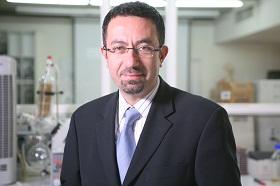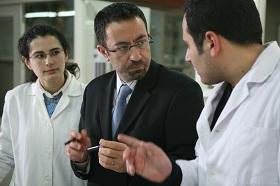Using AI to control energy for indoor agriculture
30 September 2024
Published online 31 March 2013

A genetic study in Lebanon that revealed widespread common links to an ancient civilization has brought a unifying message in a country often divided by religion and sectarianism.
The study, by an eminent Middle Eastern geneticist, found that a common genetic signature — identified as that of the Phoenicians — is present in up to 30% of males spread across Lebanon's disparate communities.
Pierre Zalloua, who led the study, said the study's message was positive, but that it had to be delivered forcefully in a country where the idea of common ancestry is regarded with long-held prejudice and mistrust: "I had to hit [the message] right on the head. Phoenician is a heritage for all."
Zalloua is renowned for identifying the genetic signature of the Phoenicians, a seafaring people who inhabited the coastline of what is now modern Lebanon in the first millennium BCE.
Like many of his population genetics, Zalloua's latest work used the Y-chromosome, which usually has no opportunity to merge DNA with other chromosomes between generations. This allows the historic movement of human populations' to be traced by clustering variations in the DNA sequence of the Y-chromosome and observing their distribution in modern populations.
Using this technique, Zalloua's team discovered that the Phoenician signature is still carried by 6% of males in populations around the Mediterranean and remains in 30% of males in the area where the Phoenician civilization existed.
He says that the results show that the bulk of genetic differentiation in Lebanon appears to have occurred before the rise of the religions that now mark the divisions within the country.
"The way I see it," Zalloua says, "Lebanon already had well-differentiated communities with their own genetic peculiarities, but not significant differences, and religions came as layers of paint on top."
"There is no distinct pattern that shows that one community carries significantly more Phoenician than another."
Zalloua is one of the leading geneticists in the Middle East. As well as working to reveal the underlying genetic factors of diseases such as diabetes and coronary artery disease, he is the principal investigator for the Genographic Project in the Middle East and North Africa. This international consortium of scientists, backed by funding from National Geographic, uses genetic markers to trace the migration paths of early humans.
Zalloua left his native Lebanon during the civil war and spent more than a decade working at various US academic institutions. He returned to his country to take up a faculty position at the American University of Beirut (AUB) in 2003. Now, he is an adjunct professor at Harvard University and dean of the School of Pharmacy at the Lebanese American University in Beirut. His experience gives him an ideal vantage point from which to observe science in the Middle East from both near and far.
There is a lot of prejudice against this type of work, a lot of sensitivity; religious, tribal and cultural.
The ability to scientifically determine Phoenician origins is potentially controversial in Lebanon, the site of ancient Phoenician ports like Byblos and Tyre. Such distinctions have for long been used to support ethnic divisions within the often febrile sectarian politics of the country.
Zalloua's continuing research into the genetics of Lebanese communities has revealed genetic traces within the Lebanese population of both the Islamic expansion from the Arabian Peninsula as well as Western European encroachments during the Crusades.
For him, these studies underline the power of the genetic anthropology work of the Genographic Project to bring people together by highlighting their shared heritage.
"We are much more closely related than we might think," says Zalloua. This notion appears to have attracted much interest in Lebanon, where Zalloua has had more people wanting to donate DNA samples than he could handle. In the wider region however, he has struggled against a number of problems.
"There is a lot of prejudice against this type of work, a lot of sensitivity; religious, tribal and cultural," he says, adding that logistical issues within the different states also make studies difficult. It is often hard to transfer DNA samples outside a country's borders.
However, creating these links to widen his geographical compass has been crucial to Zalloua's most recent studies. "The Middle East connects Asia, Africa and Europe, funnelling human migrations. We're initiating new projects in Yemen and Turkey which we think have been important gateways between the continents."
Zalloua returned from the US to Lebanon hoping to make a difference to his home country's development, but often gets frustrated by the academic and political cultures.

"It is so hard to make it as a scientist in this part of the world. Competition is harsh and no one wants you to succeed. You'll be astonished at the environment in which Lebanese scientists operate; no graduate students, no post-docs."
Investment in graduate programmes is at the heart of Zalloua's thinking on how to improve science in the Middle East: "Without serious graduate programmes, research cannot really pick up. We need to invest in these programmes and universities have to start shifting their strategies from being teaching institutes into becoming research centres."
This has been happening in various Gulf states and Zalloua is optimistic that some universities in Lebanon are starting to make this shift: "It will be a slow but progressive march forward. We need to breed researchers in the real sense of the word, people interested in making a change in the world. Research with impact can't come without a culture shift in academia."
Outside the oil-rich Gulf states, his suggested approach is to start by establishing small centres of excellence with a diverse, interdisciplinary group of researchers working on a specific topic or two.
doi:10.1038/nmiddleeast.2013.46
Stay connected: